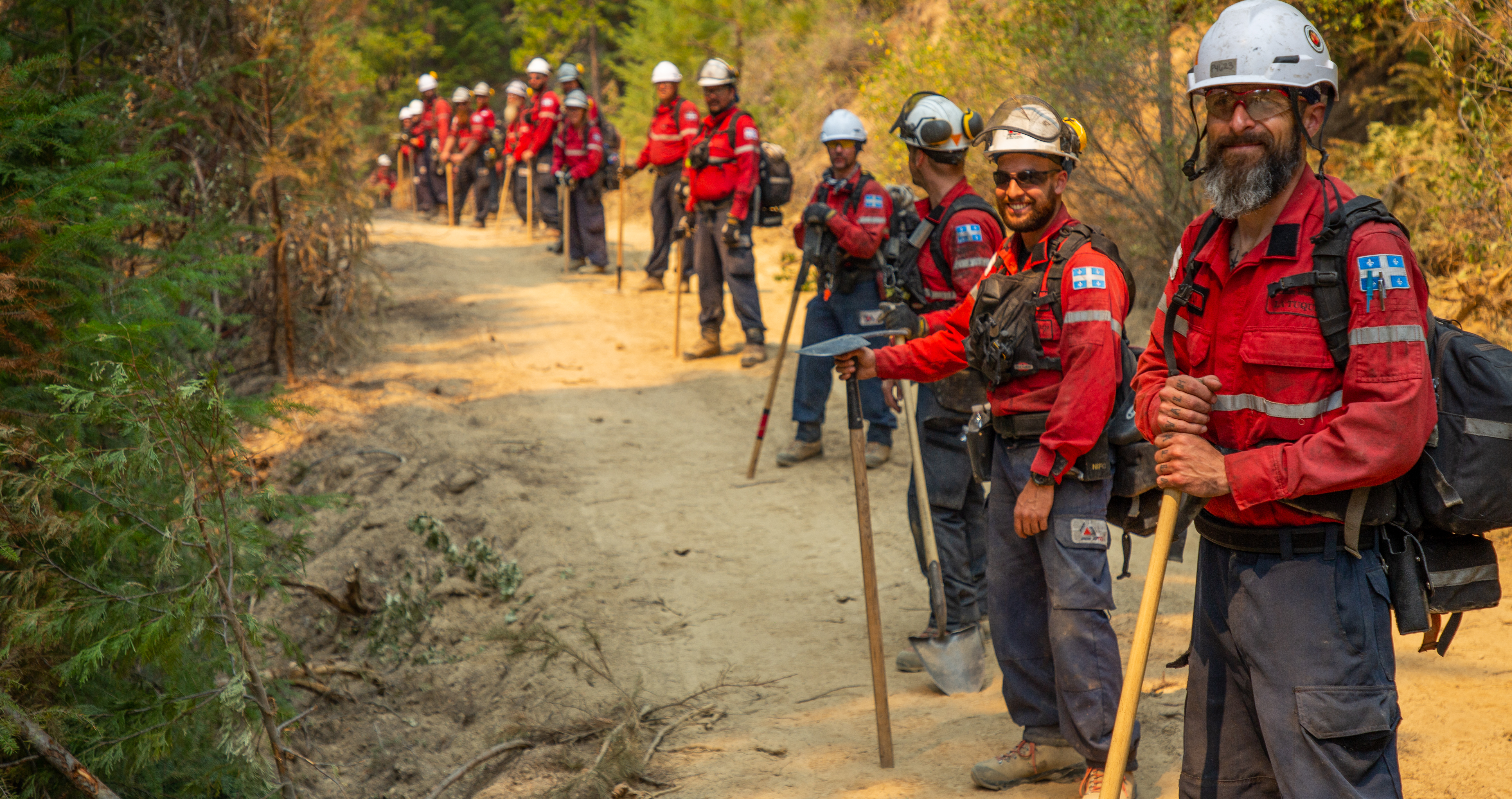The U.S. has maintained wildfire cooperation with Canada, Mexico, Australia, New Zealand, and Portugal for decades.
Australia and New Zealand
Arrangements with Australia and New Zealand set procedures for the exchange of wildland fire management resources and establishes a framework for mutual assistance and cooperation.
Since 1982, the U.S. and Canada have maintained an arrangement between the National Interagency Coordination Center (NICC) in the U.S. and the Canadian Interagency Forest Fire Centre (CIFFC) in Canada to ensure efficient resource sharing during peak fire activity.
We have been working together since the early 1990s beginning with coordinating firefighting personnel and resources in response to fires along the U.S.-Mexico border. A new arrangement was formalized in March 2015, to expand that cooperation across both countries (not just along the immediate border), and to include joint pre-suppression and training exercises in addition to response activities.
Portugal
We have cooperated with Portugal on specific fire management initiatives for many years, and in 2023 entered into an arrangement which will primarily be used to enable joint training and research activities, working toward the ability to exchange fire suppression resources in the future.
These bilateral interagency agreements allow reciprocal support during periods of severe wildfire occurrence when resources are fully committed and nations are in need of assistance from other countries to safely and effectively manage wildland fire incidents. They also allow us to exchange resources for wildfire preparedness, training, research, and post-fire recovery.
2024 Australia and New Zealand mobilization
August 7, 2024: A group of 71 fire management personnel from Australia and New Zealand are arriving in the U.S. to assist with management of numerous wildfires across the West. The personnel are arriving at the National Interagency Fire Center in two groups- one on Wednesday and one on Friday.
The two contingents will receive a daylong orientation and situation briefing as well as having equipment issued to them for the duration of their assignments. They will then be traveling to assist with various wildfires in the Pacific Northwest. The personnel are primarily fire managers that can provide safety and fireline supervision consistent with U.S. wildland fire standards.
The Australian and New Zealand firefighters are tentatively expected to depart the U.S. on September 11, although their plans are subject to change depending on the fire situation.
Mutual wildland fire assistance between the countries goes back several decades. Most recently, the U.S. sent several hundred personnel to Australia to assist with a series of devastating wildfires from December of 2019 to April of 2020. In 2023, the U.S. sent 2,774 wildland firefighters to Canada during a historic fire season across multiple provinces.
Check out their photos at: NIFC Flickr 2024 Australia and New Zealand Support
2023 Canada Support
In 2023, Canada experienced an unprecedented wildfire season with 6,623 reported wildfires burning over 45 million acres—well beyond the 10-year average of 5,597 fires for 6,798,267 acres. Starting in April, the wildfire activity escalated across all provinces and territories, leading to a National Preparedness Level of PL5 on May 11, which remained until dropping to PL4 on September 8. The United States was one of 12 countries that mobilized wildland fire personnel to Canada. Through the NIFC-CIFFC Agreement the US provided resource assistance from May through early October to Alberta, British Columbia, Ontario and Quebec. These resource mobilizations included three smokejumper aircraft (with smokejumper personnel), two Type 2 rappel helicopters (with personnel), 29 engines, 77 hand crews and 25 incident management teams3. A total of 2,774 resources were mobilized to Canada.
Check out the NIFC Flickr 2023 Canadian Support album.









